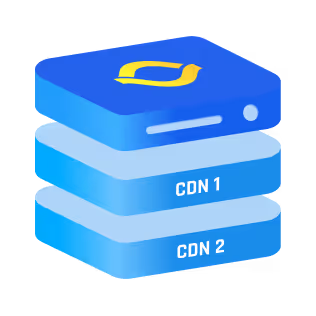Imagine a world where your internet-connected devices respond instantly, your video calls never lag, and AI-powered applications work in real-time without delay.
That’s the promise of Multi-Access Edge Computing (MEC). It’s a game-changing technology that brings cloud computing closer to where data is generated; right at the network’s edge.
What Is Multi-Access Edge Computing?
Multi-Access Edge Computing (MEC) is a cloud-computing framework that brings computation and storage closer to users. Instead of relying on centralized data centers, MEC processes data at the network edge; like at a cell tower, local data hub, or enterprise site.
This setup is crucial in 5G networks, where ultra-low latency is a must. With MEC, data doesn’t need to travel far, so applications run faster, more securely, and with less congestion.
How It Works
- User devices (phones, IoT sensors, etc.) generate data.
- The MEC server, located near the user, processes this data.
- Only necessary information is sent to the cloud, reducing bandwidth usage.
- Faster response times improve applications like real-time gaming, AI processing, and industrial automation.
MEC is about efficiency, security, and enabling new possibilities in 5G and IoT.
The Inner Workings Behind Multi-Access Edge Computing
Multi-Access Edge Computing isn’t just about speed; it’s about a fundamental shift in how data is processed and delivered.
What’s Under the Hood?
Here’s a look at its key elements:
- MEC Host
- The physical or virtualized environment where MEC applications run.
- Can be located at a cell tower, enterprise site, or local data hub.
- Equipped with AI accelerators, GPUs, and storage for high-performance computing.
- MEC Platform
- The software framework that enables communication between applications and the network.
- Provides APIs that allow developers to deploy edge-native applications.
- Ensures real-time service delivery by leveraging network slicing (dedicating specific network resources for MEC applications).
- Virtual Network Functions (VNF) & Network Functions Virtualization (NFV)
- Instead of relying on hardware-based network functions, MEC virtualizes them using NFV.
- Examples of virtualized network functions in MEC:
- Security firewalls (protecting local data)
- Traffic load balancers (optimizing data flow)
- Content caching services (storing popular content closer to users)
- API & Developer Ecosystem
- MEC provides a standardized API layer, enabling developers to create and deploy applications at the edge.
- Leading platforms like AWS Wavelength, Microsoft Azure Edge Zones, and Google Distributed Cloud offer MEC environments for businesses and developers.
These components work together to minimize latency, optimize bandwidth, and support next-gen applications like AI, IoT, and 5G-powered automation.
MEC vs. Traditional Cloud Computing
While both MEC and cloud computing aim to process and store data efficiently, their approach is fundamentally different. Here’s a side-by-side comparison to make things clear:
✔ MEC is designed for low-latency, real-time applications (like smart cities, AR/VR, and autonomous vehicles).
✔ Traditional cloud computing is still essential, but it’s optimized for scalable, non-time-sensitive workloads (like storage and enterprise apps).
✔ MEC and cloud will coexist, with MEC handling real-time processing and cloud managing large-scale data storage & analytics.
{{cool_component}}
Multi-Access Edge Computing and 5G: A Perfect Match
MEC and 5G go hand in hand. Why? Because 5G promises ultra-low latency, and MEC makes that promise a reality.
Why Does 5G Need MEC?
🚀 Lower Latency – 5G can reduce latency to under 1 millisecond, but only if the computation happens close to the user. MEC ensures that happens.
📡 Less Network Congestion – By handling data locally, MEC reduces the load on core networks, making everything smoother.
🔒 Better Security & Privacy – Sensitive data can be processed locally instead of being sent to the cloud, reducing risks.
Where You’ll See MEC in 5G
- Autonomous Vehicles – Cars need instant data processing to avoid accidents. MEC helps process sensor data in real time.
- Smart Cities – Traffic management, surveillance, and public safety systems can run efficiently with edge computing.
- AR/VR Streaming – Virtual and augmented reality require ultra-fast response times—which MEC delivers.
Simply put, 5G isn’t complete without Multi-Access Edge Computing.
Multi-Access Edge Computing Architecture
Now, let’s break down the MEC architecture; what’s actually inside the system?
At its core, MEC architecture consists of three main layers:
1. User Equipment (UE) Layer
- This includes smartphones, IoT devices, sensors, and any device that generates data.
2. Edge Layer (MEC Server & Edge Data Center)
- The multi-access edge computing server is located close to users, often at a cell tower, enterprise site, or local hub.
- It processes data locally, reducing the need to communicate with distant cloud servers.
- This layer also includes AI accelerators, storage units, and networking functions for real-time processing.
3. Core Network & Cloud Layer
- Only processed or necessary data is sent to the central cloud.
- This keeps bandwidth costs low while ensuring scalability.
By distributing computing power closer to users, MEC transforms how data is handled; faster, safer, and more efficiently.
When To Use Multi-Access Edge Computing
You do not reach for MEC every time you see the word latency. It makes sense when specific constraints push you beyond what central cloud or a CDN can offer.
MEC is usually a good fit when:
- Latency is truly critical
Your application breaks if round trips creep above a few milliseconds. Examples include collision avoidance, industrial control loops, or ultra responsive AR experiences. - You need local data processing
Large volumes of sensor or video data are generated on site and are too expensive or slow to push to a distant cloud. You process locally and send summaries or insights upstream. - You rely on network context
You want to use radio or access network information, such as subscriber state, location, or quality of service, to make decisions about how the app behaves. - You run dense, regional workloads
Many devices sit within the same campus, factory, or city. Placing MEC there reduces backhaul and gives you predictable performance inside that footprint.
If your workload tolerates tens or hundreds of milliseconds, has modest data volumes, and does not care about local network context, traditional cloud or a CDN style edge is usually enough.
Multi-Access Edge Computing Use Cases
So where does MEC actually make a difference? Here are some of the most impactful use cases:
- Autonomous Vehicles & Intelligent Transportation => Self-driving cars rely on real-time data. MEC processes vehicle sensor inputs locally, preventing accidents and improving navigation.
- Smart Manufacturing & Industry 4.0 => Factories use IoT sensors for machine monitoring, predictive maintenance, and automation. MEC enables instant data analysis, reducing downtime.
- AR/VR & Cloud Gaming => Augmented reality (AR) and cloud gaming services like Xbox Cloud Gaming and NVIDIA GeForce Now require fast, local processing to avoid lag.
- Healthcare & Remote Surgery => MEC enables real-time data processing for robotic surgeries, remote diagnostics, and AI-powered health monitoring.
- Retail & Smart Shopping => Retail stores use MEC for AI-driven inventory tracking, cashier-less checkouts, and customer behavior analysis.
- Drones & Smart Surveillance => Security systems use drones and AI-powered cameras for real-time threat detection, reducing response times.
These are just a few examples; MEC is transforming nearly every industry by bringing computation closer to users.
Multi-Access Edge Computing in Action
MEC is already being deployed worldwide. Here’s how real companies are using it:
📶 Verizon & AWS Wavelength
- Verizon partnered with AWS to create edge computing zones for ultra-low-latency 5G applications.
🏎️ Formula 1 & Edge AI
- F1 teams use MEC to analyze race data in real time, making split-second decisions on pit stops and strategy.
🏥 IBM & Edge-Based Healthcare AI
- IBM’s Watson AI uses MEC to process patient data locally, reducing delays in critical healthcare decisions.
🎮 NVIDIA GeForce Now & Cloud Gaming
- NVIDIA’s MEC-powered gaming servers reduce latency for cloud-based gaming, making real-time streaming smooth.
MEC is already changing the way we experience technology, and it’s only getting bigger.
Challenges and Limitations of Multi-Access Edge Computing
Multi-Access Edge Computing solves real problems, but it comes with its own set of trade offs.
You get lower latency and local control, but you also increase complexity in how you deploy, manage, and observe your systems.
Key challenges include:
- Operational complexity
You now manage many small edge sites instead of a few big clouds. Each site needs updates, monitoring, and incident response. That stretches infra and SRE teams if you are not prepared. - Fragmented platforms
Different operators and cloud providers expose MEC in slightly different ways. APIs, tooling, and deployment models can vary, which makes portability and standardisation harder. - Higher cost at the edge
Edge locations have less scale than central clouds. Compute, storage, and networking at the edge can be more expensive per unit, especially if sites are underutilised. - Data consistency and orchestration
Some data lives at the edge, some in central cloud. Keeping models, configs, and state aligned across many MEC sites is non trivial, especially for applications that span regions. - Regulation and data locality
Local processing can help with compliance, but it also forces you to design around jurisdiction rules and cross border movement of data. That adds legal and architectural overhead.
MEC pays off when these limitations are outweighed by the value of real time, local processing.
Otherwise, a simpler cloud or CDN based architecture is usually easier to run.
Conclusion
Multi-Access Edge Computing is a game-changer for industries that demand real-time data processing. It works hand-in-hand with 5G, reducing latency, improving security, and enabling next-gen applications like smart cities, self-driving cars, and AR gaming.
So, what’s the big takeaway? MEC brings cloud computing closer to you, making everything faster and more efficient.
FAQs
How does mobile edge computing improve performance in 5G networks?
Mobile edge computing 5g moves compute and storage from distant data centers to MECs located at or near 5G base stations. By processing data inside the MEC network, you cut backhaul latency, reduce congestion, and deliver faster response times for bandwidth-heavy, real-time apps like AR/VR, gaming, and video analytics.
What are the main advantages of deploying MECs closer to end users?
Placing MECs closer to end users shrinks round-trip time, keeps more traffic local, and offloads work from centralized cloud regions. That improves QoS for latency-sensitive workloads, enhances privacy, and lowers transport costs. It also enables new mobile edge computing 5g use cases like smart factories, connected vehicles, and stadium experiences.
How does a MEC network differ from traditional cloud infrastructure?
A traditional cloud relies on large, centralized data centers, while a MEC network distributes smaller compute nodes at the edge of mobile networks. MECs serve a limited geography with ultra-low latency and localized data processing. Cloud still handles heavy batch workloads, while mobile edge computing focuses on time-critical, context-aware services.
What types of MEC equipment are required to enable real-time processing?
MEC equipment typically includes ruggedized edge servers, virtualized compute platforms, high-performance storage, and networking gear integrated with 4G/5G base stations. You also need orchestration software, security appliances, and APIs that expose edge services. Together, this MEC 5g stack enables real-time processing for applications that cannot tolerate traditional cloud latency.
How does mobile edge computing 5g support IoT and AI-driven applications?
Mobile edge computing 5g lets IoT sensors and AI models interact with nearby MECs instead of distant clouds. The MEC network ingests device data, runs inference, and sends back decisions in milliseconds. That makes applications like predictive maintenance, autonomous robots, smart cities, and computer-vision analytics more reliable, scalable, and secure.



.png)
.png)
.png)






